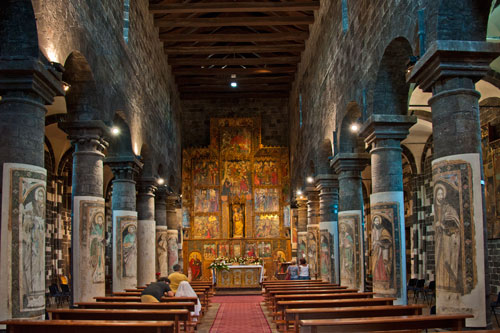Nostra Signora del Regno and Sant’ Antioco di Bisarcio
map with both churches
Ardara, Nostra Signora del Regno


The interior of the church is sparsely decorated. The first things that catch the eye are the columns painted with ancient frescoes. The wooden pulpit dates back to the 16th century.
The most valuable piece is the huge altarpiece, composed of thirty individual paintings. It was created in 1515 by Giovanni Murru and is considered one of the most beautiful altarpieces in Sardinia.
Enzio, the son of the Hohenstaufen Emperor Frederick II, married Adelasia here in 1238 – the heiress of the then-judicatures of Torres and Gallura.
Unlike other Pisan churches in Sardinia, Nostra Signora del Regno is used for daily worship services.
Sant’Antioco di Bisarcio


 The interior is almost devoid of decoration.
The interior is almost devoid of decoration.
The capitals of the columns largely feature fantastic and finely crafted motifs: flowers, sun and star symbols, mythical creatures, faces of humans and animals, as well as demon grimaces.
